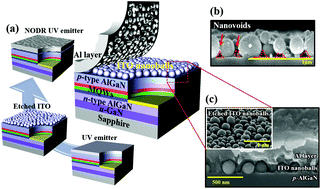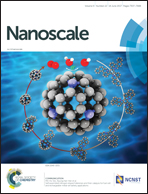Self-assembled indium tin oxide nanoball-embedded omnidirectional reflectors for high photon extraction efficiency in III-nitride ultraviolet emitters
Abstract
The control of the refractive index and electrical conductivity in the dielectric layer of omnidirectional reflectors (ODRs) is essential to improve the low efficiency of AlGaN-based UV emitters. Here, we report self-assembled indium tin oxide (ITO) nanoball-embedded omnidirectional reflectors (NODRs) for use in high-efficiency AlGaN-based UV emitters at 365 nm. These NODRs consisted of a reflective Al layer, a self-assembled conducting ITO nanoball layer for current injection and spreading, and nanovoids that provided a low refractive index to achieve highly efficient UV emitters. The NODR was able to realize both high electrical conductivity and reflectivity by decreasing the average refractive index of the ITO nanoball layers. We observed diffuse reflection as well as omnidirectional reflection from the NODR UV emitters because of the corrugated interfaces of the nanovoids, ITO nanoball layer, and Al layer. These structural and optical properties of the NODRs remarkably increased the output power of a UV emitter by a Lambertian enhancement factor of 57% at an injection current of 50 mA at all emission angles compared with that of an ITO film/Al UV emitter.



 Please wait while we load your content...
Please wait while we load your content...